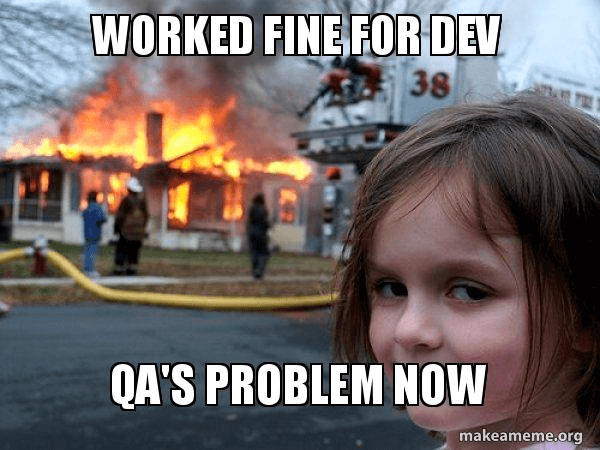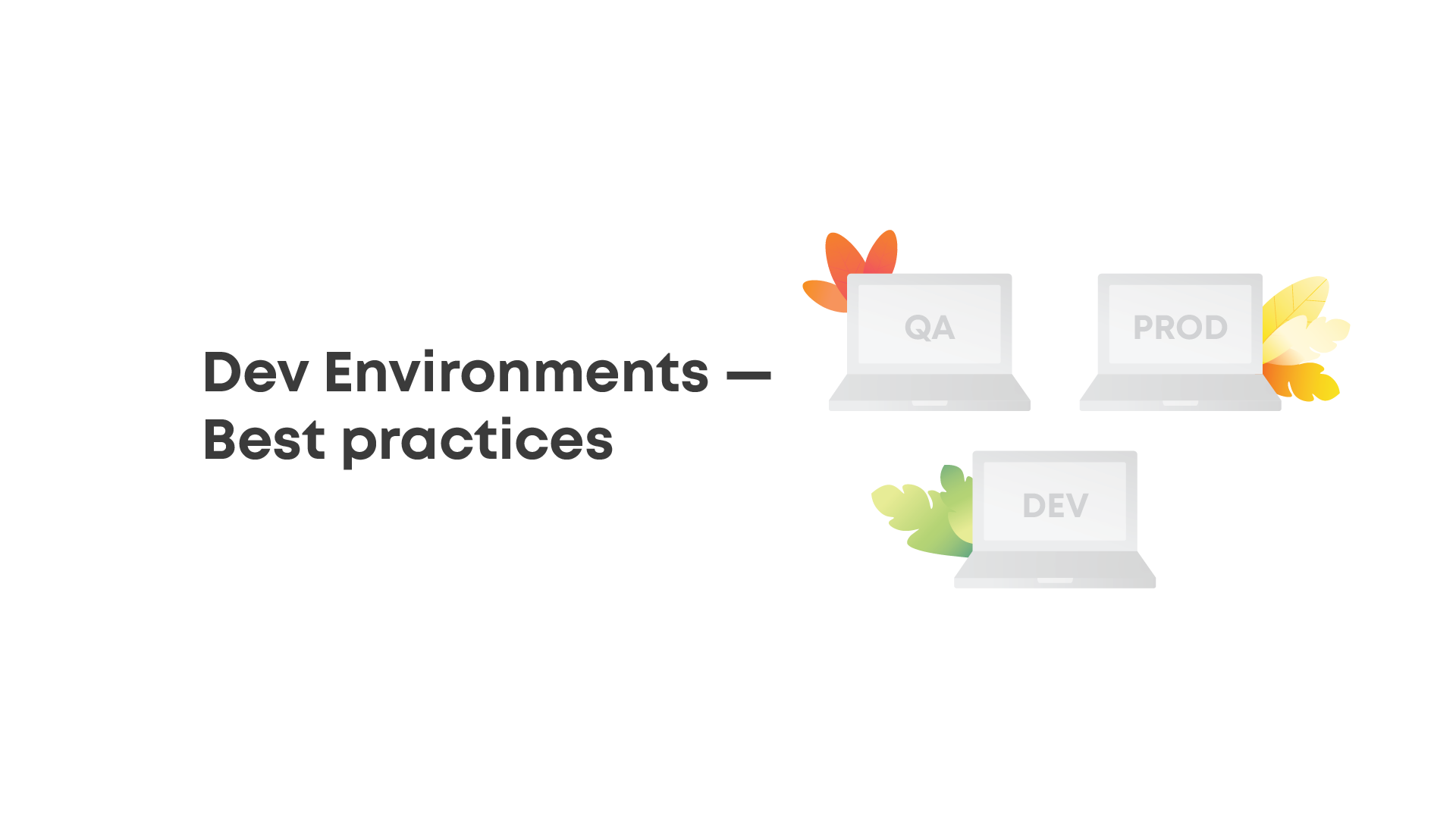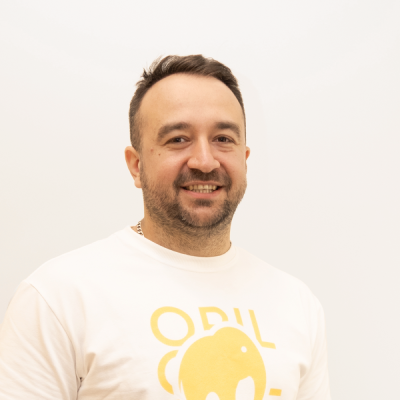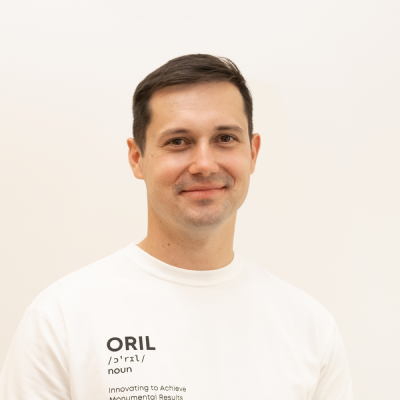It’s a common practice for the ORIL team to have multiple environments during product development. We use a multiple-environment setup because it’s beneficial to the development process in many ways. For example, it helps tackle the cross-team issue by providing each team with a workspace of its own. Also, it allows us to detect bugs faster and minimize the risk of having them in production (which, you know, can be a costly thing). This is a great approach that helps us increase time to market because our teams work in parallel.
Today we will discuss why it’s critical to have all development environments aligned. We’ll explore the challenges of maintaining multiple environments and share best practices for ensuring consistency and efficiency across the entire development process.
So let’s dive in!
What Is a Development Environment?
The environment is the set of tools, servers, databases, and other resources developers use during creating applications. It’s where we deploy all changes before they reach a live app or website.
Every environment includes the following components:
- A physical or virtual machine, which includes the operating system, database, etc.
- Development tools like libraries, compilers, etc.
- Associated 3rd party services like cloud hosting, SSL certificates, etc.
- Cloud service configuration including DNS configs, white listing, load balancing. etc.
ORIL uses the environments to write code, debug issues, run unit tests, push the code to shared environments to merge it with other code snippets, and validate the code once it is merged.
What Are Some of the Common Types of Development Environments?
Let’s start by saying that there is no best way to set up your environment. Each organization or expert (if working individually) can choose their own best practices that suit the product development for a particular setting.

At ORIL we created some of the foundational guidelines that work in 90+% of the cases. This allows us to create and innovate, without disrupting the production environment. A typical ORIL environment setup includes:
- Local. A local environment is a developer’s machine where they do their job — write the code and test it. When they complete their part of the job, they push the code to remote hosting.
- Dev. Next, we deploy the code to the dev environment to share it with other developers. For instance, a front-end developer will need to have access to the latest API version to be able to proceed with developing a user interface.
- QA. Once a great part of the functionality, both front-end and back-end, is completed, we test the code to confirm that it does what we want it to and whether it aligns with the product requirements in the QA environment. The latest software version is deployed to QA servers, and a QA engineer runs their own test scripts to identify any bugs.
- Prod. When the code is working without a hitch and a QA engineer doesn’t find any bugs (spoiler: this almost never happens and you might need to fix the code before moving to a new environment), we approach the final destination — a prod environment. It is also known as a live environment. That’s where end users interact with an application or website.
Challenges of Working in Multiple Environments
When the environments are not properly created and configured, you may encounter quite a few challenges. Here are some of the most common ones:
- Inconsistencies in the codebase, leading to bugs, errors, and unexpected behavior that can be difficult to diagnose and fix. This results in delays in the development process and impacts the overall quality of the software.
- Collaboration between team members suffers when everyone is working with different tools. This leads to miscommunication, misunderstandings, and a lack of clarity about the project’s requirements.
- Harder to reproduce issues and test the software effectively. This adds up to longer testing cycles and delays in the deployment process.
- Security vulnerabilities if the environments are not properly configured, data breaches, loss of sensitive information, and other security issues that can harm the business may take place.
An Example of an Issue You May Face Dealing with Multiple Environments
Imagine a case when your app users report a bug. Let’s say, they successfully went through the checkout process, paid for the product/service, but never received it.
A QA expert sees the reported bug and tries to reproduce it in the QA environment. Seems like a piece of cake. But after spending countless hours trying to locate the issue in the code, the QA engineer can’t seem to reproduce the problem — even though it’s still happening in production. This is a major issue that can cause a lot of frustration. And it really does.
Basically, the main problem with different environments is that bugs that happen in the prod environment are not reproducible in the QA environment, and vice versa. This could lead to a big problem — such as you won’t be able to fix your payment issue for weeks! Just think of the damage to the reputation and other downtime-related costs.

The Key Reasons for the Issue
First of all, ask yourself the following question – Are my prod, QA, and dev environments configured in the same way? If your answer is not a confident ‘YES’ then review the items below, they could be a good starting point for improving your environment setup.
- Software versions. If you manually configure your environments, you might end up with different software versions.
For instance, you could install Nginx 1.0.0 on your dev environment, which was the latest version at the time. But later on, you find out that Nginx has developed further and the latest version is now 1.0.1. And when you were configuring your production environment, you installed Nginx 1.0.1, the latest version without updating the dev environment. Now the dev and prod environments are completely different and you can’t reproduce a bug. - Cloud hosting configurations. Different settings of servers, rules, and IP whitelisting mistakes can affect app performance. For instance, different server configurations can impact app performance, such as the amount of RAM, the number of CPU cores, the type of storage, and the operating system. Also, if the IP addresses are not synced across multiple environments, this can prevent the users from accessing the app altogether.
- Differences in the build process. This can lead to inconsistencies, build failures, configuration issues, version control problems, testing issues, and security vulnerabilities. For example, inconsistent builds can cause problems with deploying and testing the application, while configuration issues may result in build failures or errors in deploying the application.
- Startup parameters inconsistency. Launching an application with different environment variables can lead to various issues that can affect the application’s performance and behavior. Namely, you may notice inconsistencies in the app behavior or have configuring, deployment, or security issues.
- Security and permissions settings.
Your production and development environments need to have matching security settings.
Therefore, it’s crucial to always pay attention to aligning your environments. That’s one of the key points to keep in mind during development.
Best Practices for Managing Your Development Environments
To ensure that all your development environments are synced, it is most advantageous to automate the process of setting up your environments as well as packaging, building and deploying your applications. Creating scripts that spin up all the servers, install all the necessary software, and do it all in the same way for all your environments will guarantee that all the versions are similar.
This approach drastically increases your chances of being able to reproduce the same results in your application flows in all your environments. This will save you lots of working hours and tons of client money that can be better spent on developing new features rather than fixing old bugs.
Here are more tips from the ORIL team that will help you keep multiple development environments synced:
- Use containers to achieve great portability, consistency, isolation, and efficiency.
- Make use of CI/CD tools to make sure that the application packaging and deployment process is the same across all your environments.
- Use the same server instance types to ensure that all environments have the same computing power and resources, making it easier to manage and scale an application across multiple environments.
- Follow the same build processes to maintain consistency and reduce the risk of build failures or configuration issues.
- Resort to the same libraries and versions to reduce the risk of compatibility issues, bugs, or other problems that can arise from using different versions of libraries in different environments.
- Use the same database sets, ideally replicating as much real user data as possible.
- Use similar database volumes in the dev or QA environments to replicate loads in production to get a better view of its performance in real-life settings.
- Use configuration management tools like Puppet, Chef, and Ansible to manage and automate the configuration of your development environments, including server and application configurations, package installations, and security updates.
- Document environment setup and configurations to reduce confusion and ensure that everyone is on the same page. Documenting your environment setup can also help new developers onboard and grasp the project’s requirements.
- Monitor environment health to identify issues early and prevent downtime. Tools like Nagios, Zabbix, or Prometheus can help monitor system performance, resource utilization, and service availability.
The Bottom Line
In software development, having aligned development environments is crucial for ensuring that the code is consistent, efficient, and secure. It can help reduce errors and improve collaboration, which is especially important when working on complex projects with multiple developers. Automating the process of setting up and configuring environments will not only simplify the development process but also increase the reliability and stability of your software.
If you are a product owner and would like some help to make all environments aligned, delegate this to our professional team. At ORIL, we offer a range of services and solutions to help you fix issues associated with multiple environments. Our team of experts can provide guidance on setting up and maintaining your environments, ensuring that they are always in sync and up to date. With our help, you can be sure that your software is always reliable and stable.





